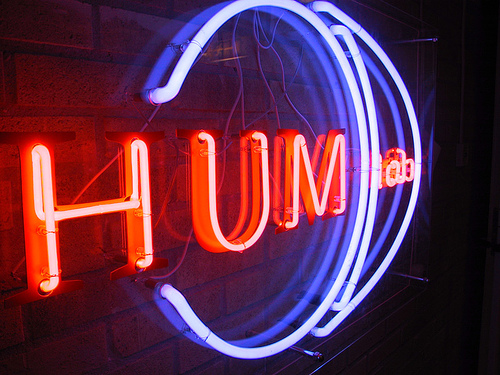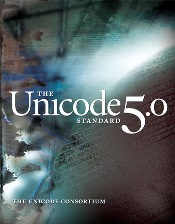 BC.NET has a story on Shakespeare Across the Ether: Transmitting Digital Literature to Researchers Anytime, Anywhere which is about the TAPoR project at the University of Victoria. It talks about my friend Ray Siemens and digital humanities work on the Renaissance English Knowledgebase.
BC.NET has a story on Shakespeare Across the Ether: Transmitting Digital Literature to Researchers Anytime, Anywhere which is about the TAPoR project at the University of Victoria. It talks about my friend Ray Siemens and digital humanities work on the Renaissance English Knowledgebase.
Category: Humanities Computing
Web Mining for Research
Web Mining for Research is a white paper I’ve just written to get my ideas down about how we should be using the Web as evidence not just for social science research, but in the humanities. Digital humanities is more than studying old wine in new digital bottles – the challenge is to do humanities research using the digital as evidence. For me the challenge is how to rethink philosophy now that we can mine concepts in their sites, to paraphrase Ian Hacking.
Humanities Computing Links
 I have set up an account on the TAPoR portal where I have created a list of Humanities Computing Links. Because it is on the portal you can analyze the texts. I have also tagged them so you can look at a subset like, Text Analysis.
I have set up an account on the TAPoR portal where I have created a list of Humanities Computing Links. Because it is on the portal you can analyze the texts. I have also tagged them so you can look at a subset like, Text Analysis.
A Companion to Digital Humanities
A Companion to Digital Humanities is now online. This is a collection of essays on humanities computing by leading digital humanists. I contributed a short chapter on Multimedia written with Andrew Mactavish.
Update: Thanks to Matt for finding a typo.
Svensson Talk
Patrick Svensson gave a talk on Friday, December 1st, about visualization and space in humanities computing. (He blogged the visit here.) At the end he showed 3D reconstructions and fly-throughs of the current HUMlab space and the new extended space. The space is optimized for visualization with screens of different sorts around the walls. It is less of a one-person-one-computer lab and more of a collaborative space for encounters.
I blogged this under Research Notes: Patrik Svensson.
Patrik Svensson
 Patrik Svensson Director of HUMlab, Ume?• University, is giving a talk tomorrow here at McMaster.
Patrik Svensson Director of HUMlab, Ume?• University, is giving a talk tomorrow here at McMaster.
In this seminar I will start out from a general discussion of the visual in the humanities and in the digital humanities, and a critique of traditional ‘humanities computing’ which tends to be predominantely textual. I will base my further investigation on several projects from different areas including art history, history, antrophology and linguistics. Key points of discussion include the materiality of interfaces, added values, innovation strategies, and the role of the visualization. Among relevant technologies are geographical information systems, multi-spectral analysis and virtual worlds. Digital culture also gives us highly visual study objects such as computer games, social software and electronic literature, and these will be considered. The final part of the talk deals with physical lab and studio spaces for the digital humanities. How is the visual articulated in such collaborative work spaces? It will be suggested that the humanities may benefit from working with many, individual screens in collaborative settings rather than immersive environments such as CAVEs. HUMlab at Ume?• University will be used a case study and I will describe a planned (and funded!) expansion of the lab which will add thirteen new screens to the studio space.
From the descriptions of the HUMlab it sounds like a creative space – they have paid attention to creating a space where people can meet across the humanities and IT disciplines.
Forking the Wikipedia
Larry Sanger forks the Wikipedia reports on an initiative by one of the founders of the Wikipedia to create an alternative by taking the content and setting up an editorial system with more control by expert editors. The alternative would be called the called the Citizendium.
The Wikipedia is an important example of a social knowledge network that has stirred up a lot of controversy this year. There is a literature now about the Wikipedia and its discontents. See, for example the Request for Comments (RFC) by Alan Liu about student use of the Wikipedia. He sees 2006 as a threshold year when students started using the Wikipedia like never before.
Is it a sign of maturity when web phenomena like the Wikipedia don’t just get reported with that “gee whiz, isn’t this neat” tone, but are being really debated?
Unicode 5.0.0 is almost out
 Unicode 5.0.0 is about to be released by the Unicode Consortium.
Unicode 5.0.0 is about to be released by the Unicode Consortium.
For those of you who don’t know about Unicode, it “provides a unique number for every character, no matter what the platform, no matter what the program, no mater what the language.” (My emphasis) In other words it replaces ASCII as the standard for character encoding to support multilingual computing across platforms.
For more information see What is Unicode? or Useful Resources.
I also note that the Unicode site has a Chronology Of Unicode Version 1.0 along with information about contributors/members over time. Xerox, for example, seems to have been a major player in the early years, but is no longer a member. I also note that there are two governments that are institutional members, India and Pakistan (they joined a year apart) and one university, Berkeley. What a strange trio of institutional members.
MITH – Maryland Institute for Technology in the Humanities
MITH (Maryland Institute for Technology in the Humanities) is one of the leading digital humanities centres in the USA. They have a new Director, Neil Fraistat, and a new look to their web site.
From the Flick photos it looks like they have a agreat speakers series and a new paint job in their CoffeeHouse.
ACLS Commission on Cyberinfrastructure for the Humanities & Social Sciences
ACLS Commission on Cyberinfrastructure for the Humanities & Social Sciences has released their final report.
Their recommendates are:
- Invest in cyberinfrastructure for the humanities and social sciences, as a matter of strategic priority
- Develop public and institutional policies that foster openness and access
- Promote cooperation between the public and private sectors
- Cultivate leadership in support of cyberinfrastructure from within the humanities and social sciences
- Encourage digital scholarship
- Establish national centers to support scholarship that contributes to and exploits cyberinfrastructure
- Develop and maintain open standards and robust tools
- Create extensive and reusable digital collections
I note that the development of robust tools is one of the recommendations (along with open standards). See my earlier post Humanities Cyberinfrastructure.